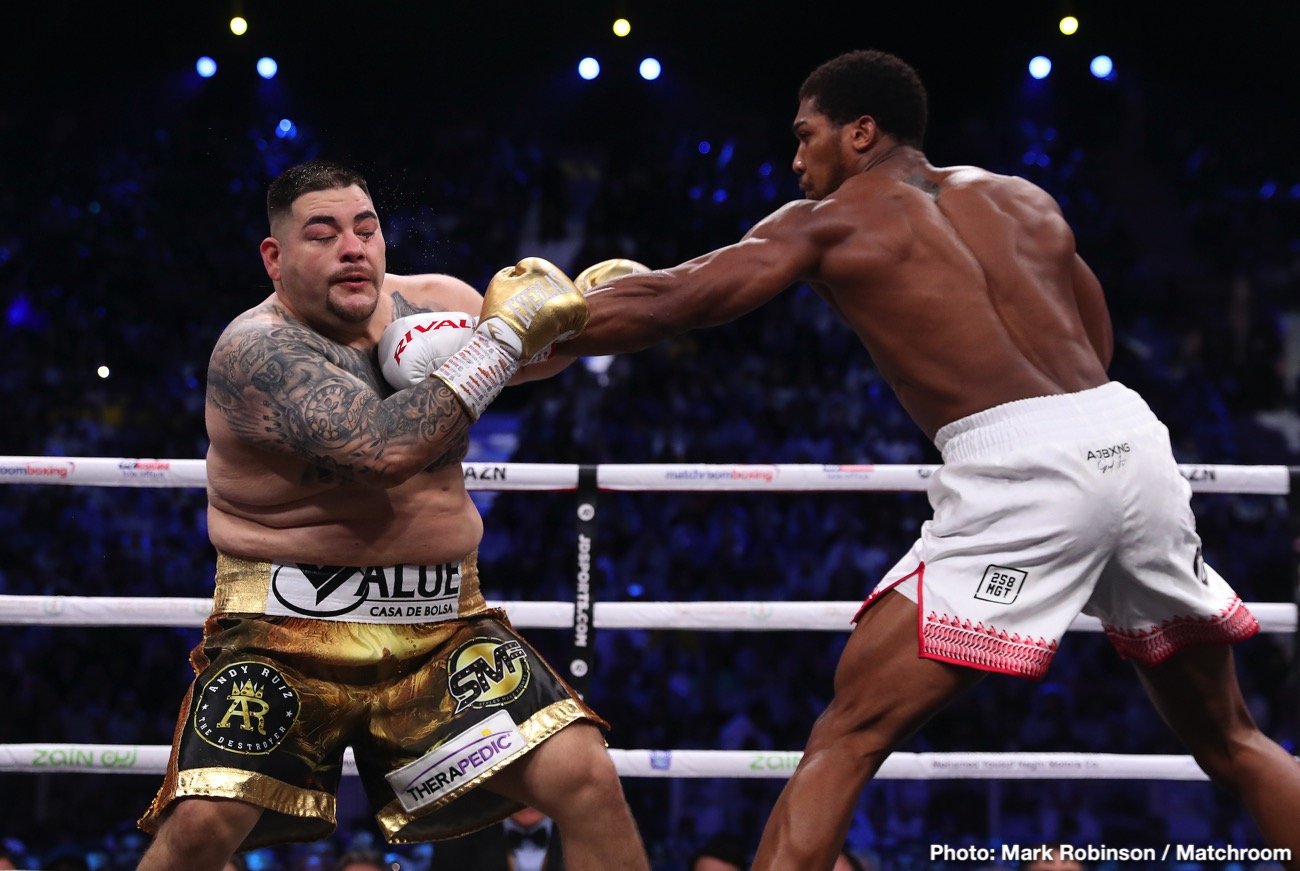Nearly a week after Anthony Joshua regained his precious straps, the rhetoric from both sides – supporters and detractors – continue to rain down voicing every angle under the sun. In an effort to hone in on the reality behind his triumphant moment, we take a brief snapshot of each perspective:
THE GOOD
Coming into the showdown many leaned towards Andy Ruiz, thinking there was no way Anthony Joshua could avoid the thunderous shots which ultimately pulled the curtain on his American debut in New York City. Very dependent on his power in the past, it just seemed like the odds of him going 12 full rounds without getting caught in an exchange was slim to none.
To the surprise of viewers watching around the world and perhaps even to himself, Joshua was able to stick to the gameplan and execute nearly without a flaw. Despite a few shots taken to remind him how important that gameplan was, he demonstrated the type of discipline which can only result in a victory. As solid as the plan was, many wonder is it one he can adopt to consistently? To gauge that possibility, we look at the other side of the coin.
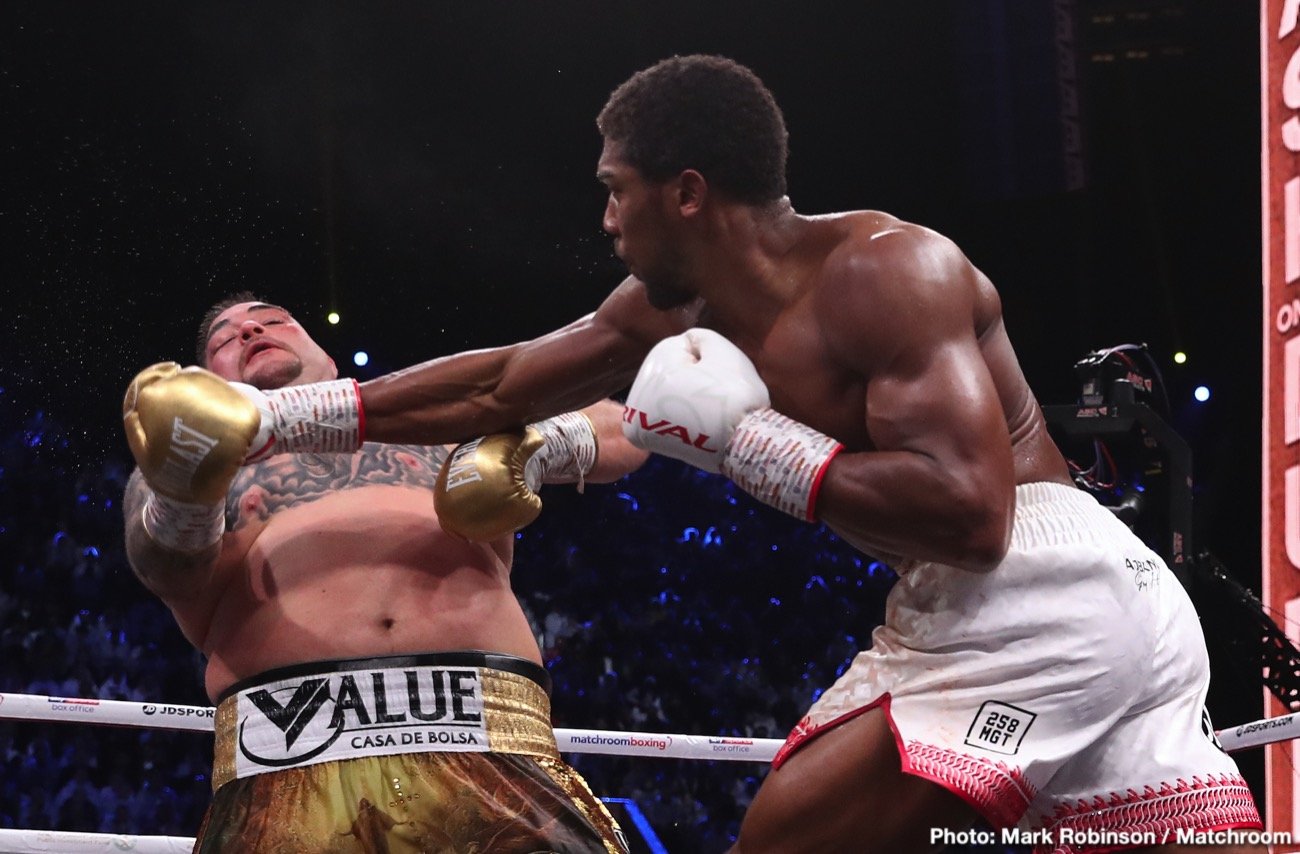
THE BAD
Despite his flawless execution, the reality behind Joshua’s victory was that his success wasn’t driven from pure skill, but rather necessity. Evident in his new approach was the fact that this was a man who was very much afraid to be hit. Such a strategy seems remarkable in theory, but reality tells us victory could not be accomplished down any other path. The physical attributes of Andy Ruiz (6’2″, 74 inch reach) made this strategy a very easy one to utilize. Unfortunately for Joshua, Ruiz represents the smaller, more compact frame of yesterday’s heavyweights.
The men who threaten Joshua the most don’t have such an issue, which will ultimately make it harder for him to adopt this new strategy. Tyson Fury is 6’9″ with an 85 inch reach, while Deontay Wilder is 6’7″ with an 83 inch reach. Both are more proficient with their jabs, both can connect with it at a much further distance, and both would make it considerably harder for Joshua to land his. How Joshua adopts to that size differential while trying to conquer a new approach remains to be seen. This is where the “ugly” side comes into play.
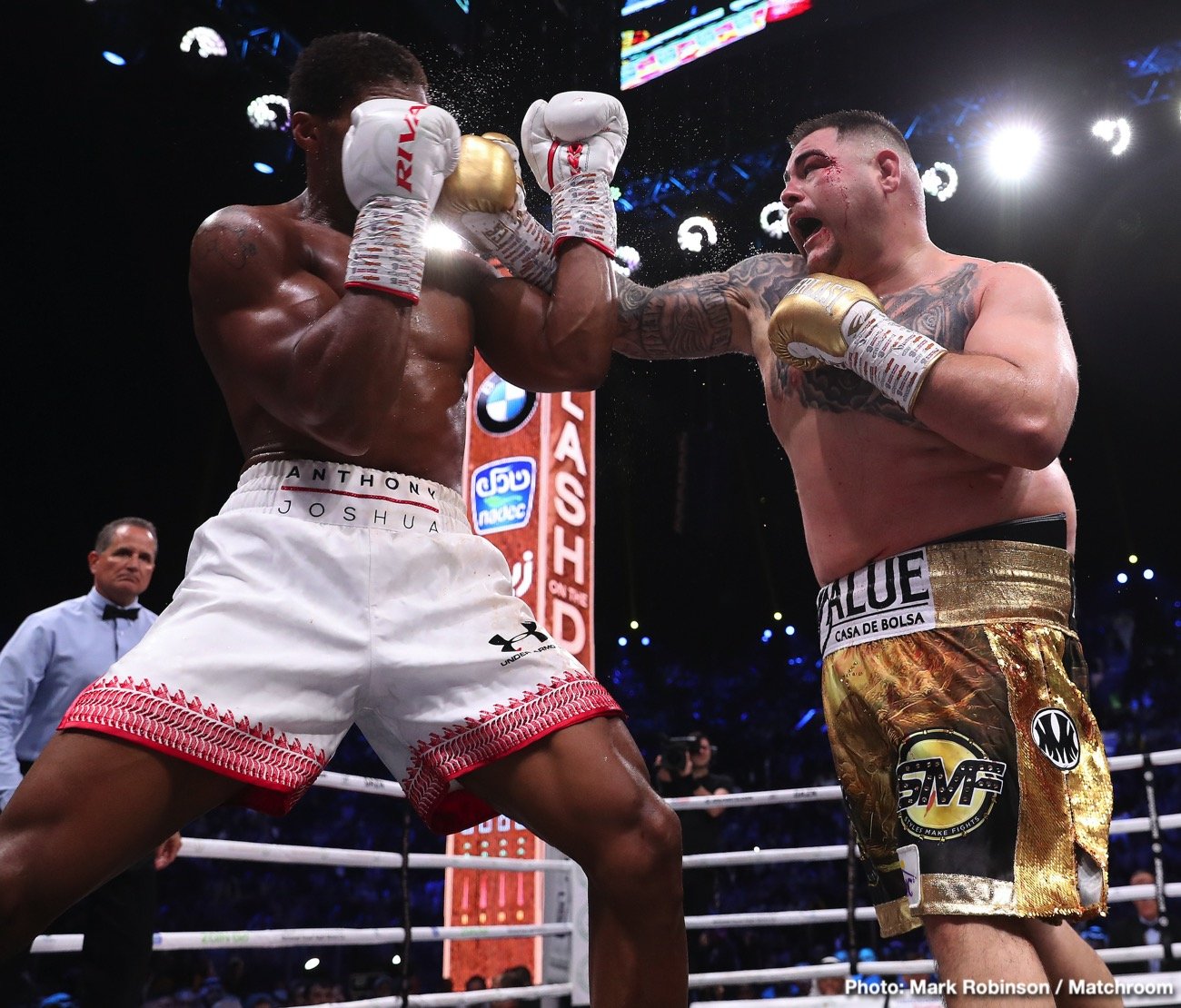
THE UGLY
As promising as it was to see Joshua stick-and-move for 12 rounds, we all must remember that this journey started back in June, not last weekend in Saudi Arabia. In the aftermath of the showdown many fans have bombarded Ruiz with insulting rhetoric strong enough to make your flesh crawl! While true for the most part, it’s just a friendly reminder that the pendulum swings both ways, and now that it has, we can take a more neutral look all sides involved.
In the aftermath of Ruiz’s decision loss, the consensus perspective is that he needs to go back to the drawing board, lose some weight, and focus on training strategy and execution, as he was clearly distracted and not fully prepared. Why is that interesting? Few have noted but this was the identical perspective with Anthony Joshua after the first fight. The entire focus of his training camp for the rematch was to trim down weight (shedding the muscle mass), and focus on strategy and execution. The only difference between the two outcomes was the fact that Joshua was knocked out, while Ruiz was simply outpointed.
Why is that important? Because it also sheds light on the reason Joshua had to employ the stick-and-move strategy and Ruiz didn’t. The toughness of Joshua under the pressure of the heavyweight division’s power punchers remain a question mark. Against Klitschko, we saw him get up off the deck and jump up to earn respect! But in the aftermath of that fight he vowed to “never find [himself] in that situation again”. More and more, he appeared timid and a bit unsure of himself against punchers he felt could hurt him. After the knockout to Ruiz, his only option was to totally revamp his style. Credit to him, as few fighters have such adopt-ability.
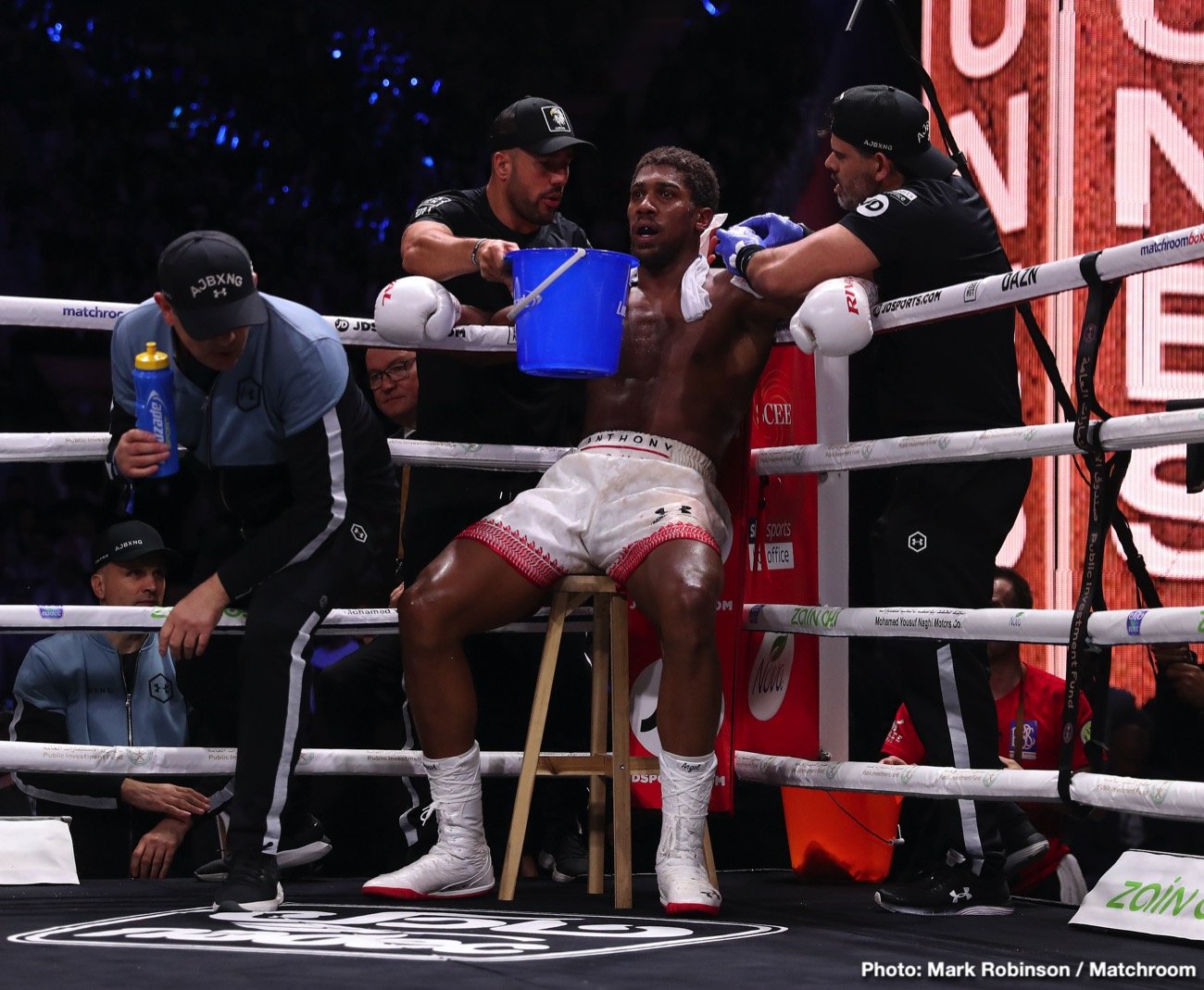
The flipside is that this style not only presents an issue against longer, more dangerous fighters, but it also fails with the fans! When Pernell Whitaker (RIP), Toney, Hopkins, Mayweather and Rigondeaux used their skills to outshine the best of the rest, we heard terms like “boring”, and “snoozer”. In the aftermath of Joshua’s victory we’re hearing words like “Master Class”, and “Put on a Clinic”. While it’s exciting to see Joshua expand on his greatness, let us be reminded that a 28% connect rate is far from spectacular, and such a low percentage rate clarifies that he fought more experimentally than accurately.
Toney v Holyfield was a “clinic” (52% connect rate). Mayweather v Canelo was “Masterclass” (46% connect rate). What Joshua did was the first step in the right direction. But lets allow his evolution to advance before we start using such terms. Unfortunately, he’s not there yet, and with less than 25 pro fights, this is common. That actually proves his potential even more! A fighter with his power and ability isn’t one fans care to see “stick-and-move”. But the name of the game is “victory”. Whatever you can do within the bounds of the rules to gain it can only be commended. Job well done, Champ. Now what next?
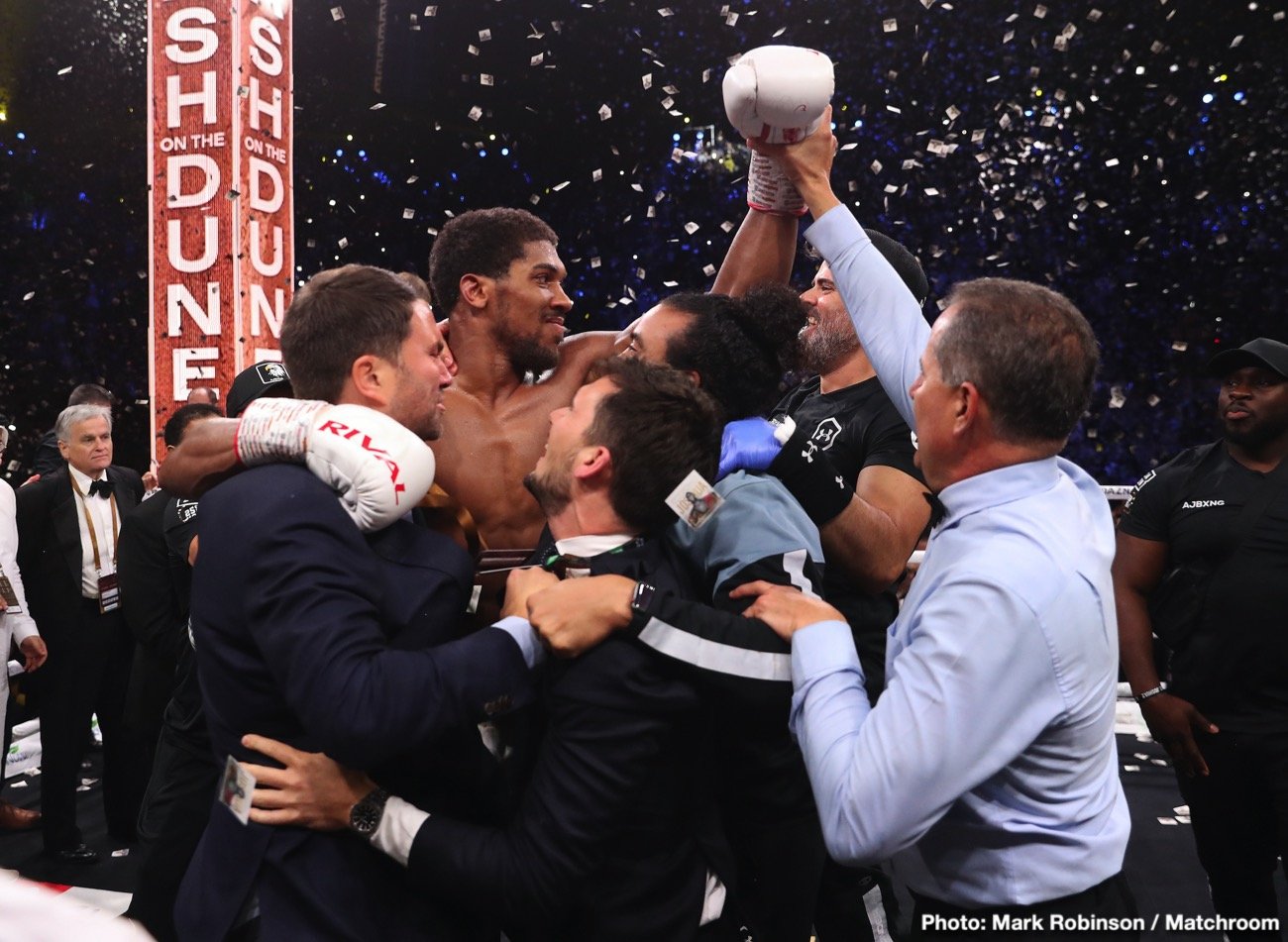
(Vivek “Vito” Wallace can be reached at 954.770.9807. He can also be read here on boxing247.com, or seen on Facebook, and occasionally Twitter – @vitostake)
